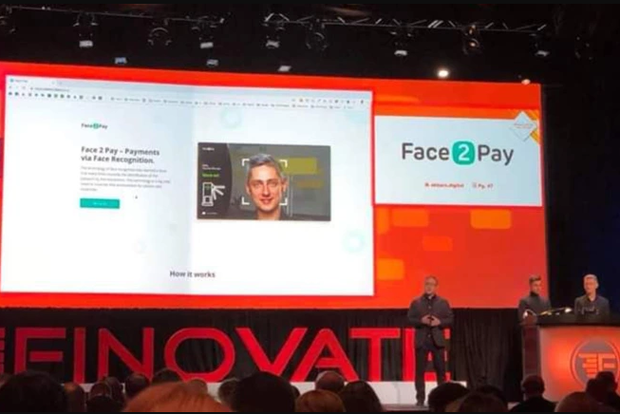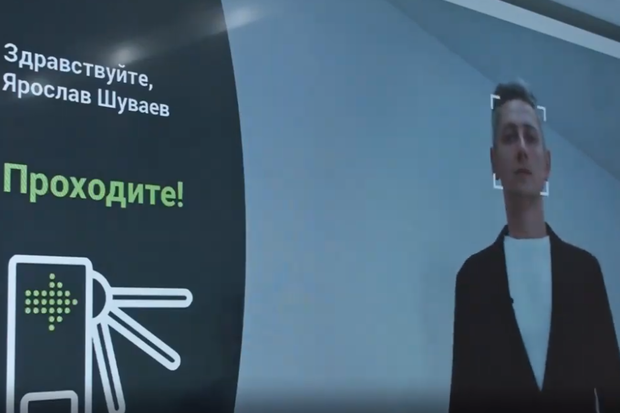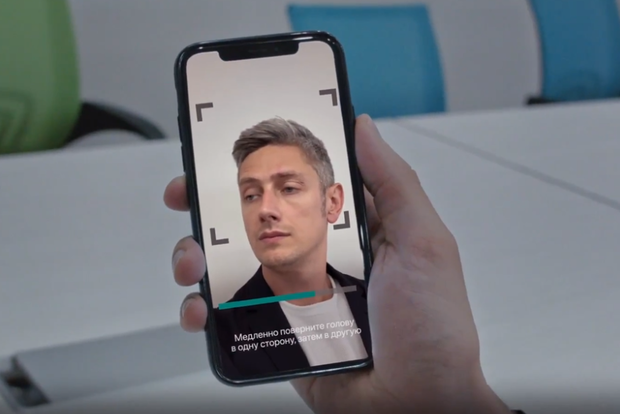Damir Galiev: ''Biometrics has become a very powerful trend, which in any case will enter our lives''
Last year, a Tatarstan bank presented the technology Face2Pay, becoming the first bank in Russia that created a working concept of integrated payment and access control systems based on face biometric. Realnoe Vremya talked with director for innovation at the credit institution Damir Galiev about how the technology was created, whether it can be deceived and whether it is successfully ''run-in''. The speaker also spoke about how often banks become developers of new technologies, whether the Russian financial sector is sufficiently ''digitized'' and when we move to the active use of facial recognition technology.
''Russian banking market is considered one of the most technologically advanced, but...''
Almost all publications about Face2Pay emphasize that this is ''the bank's proprietary technology''. How justified is it to call it ''proprietary'' from a technical point of view? What is it based on? How and by whom was it developed?
First of all, it is necessary to clarify what is meant by ''property'': in this case we are talking about the algorithm itself. There are numerous scientific publications devoted to which algorithms are most applicable in industrial operation, as well as papers about new algorithms that are being developed at the moment. Our R&D team is focused on product implementation — we look at the emerging research and the results of their implementation, and only then decide on experiments and implementation. One option is when a company buys facial recognition algorithms and starts using them. But we have another solution, it is to implement an ensemble of algorithms for further use in the product. We believe that this competence is important to have independently, as in the future it will be used in many user cases. By investing in it once today, we can save tomorrow.
As part of the digital laboratory of Ak Bars Digital Technologies Bank, there is a team of Data Science. Its profile is machine learning and, accordingly, machine vision, whose algorithms have been applied in our product Face2Pay. The task set for the team grew into a prototype of the product at the stage of the experiment. About a year ago, we thought that this new method of validation can be applied to payments or other services. The first decision in the form of a prototype was demonstrated at the annual general meeting of shareholders of the bank in May 2018. After receiving good feedback, we continued to invest in the development of this prototype and then created a more advanced solution that worked in conjunction with the bank's mobile application. To assess the reaction of potential customers and leading experts at a new level, we presented this case at Finovate Fall 2018 conference in New York. The positive feedback received there inspired the team to further work, and in November we implemented the first ''combat'' case — we implemented the system in the sports centre Miras in Almetyevsk.
As a result, the active development of the prototype and wide coverage in the media created demand from partners (someone wants to experiment, and someone — just put themselves a scaled solution). Therefore, before entering the market with the product, we decided to focus on running the technology inside the bank. Only after we make sure that the technology works and it is absolutely safe, we will offer it to clients.

To assess the reaction of potential customers and leading experts at a new level, we presented this case at Finovate Fall 2018 in New York. Photo: recognize.ga
How technological is the financial sector in Russia today in your assessment?
The Russian banking market is considered one of the most technologically advanced, but, in any case, there is no limit to perfection. In competition, banks will work to improve their technologies. Also, due to the fact that Russia has a very progressive regulator, in certain areas we can have alignment on technological development. Banks will continue to compete, including in the technological arena, and create more and more useful services and automate processes.
In general, even within the community there are completely different opinions: someone says that we still have someone to look up to (and this is true), and there are also those dissatisfied with the development of the situation. But in general, there are several important working groups at the level of interbank cooperation, which initiate the necessary changes. We are talking, among other things, about new draft laws that allow us to create digital platforms and transfer the document flow from paper to digital. It is a question of concentration of pains when banks say that it is time to solve the problem with this or that direction, and achieve changes.
It is clear that most customers now want to solve their financial issues without visiting the office, providing a minimum of information about themselves. Now just the work are ongoing in this direction, to have only one identifier.
''Any technology can be cheated — the only question is the cost of deception, and it will be expensive''
Could you tell us briefly about how Face2Pay works? Someone may find it difficult to imagine the process of paying for a purchase without a card, cash or smartphone. A similar situation with the passage to various objects.
First, you need to transmit the image of your face. To do this, in the prototype, we implemented the following method: the client needs to look at the camera from different angles to ''grasp'' the image under different conditions. You can do this in different ways: transfer data in a mobile bank, or using any workstation.
The data is transferred, then it all depends on the specific case, because the basic solution that we have developed has already grown to several applications. There is a case of loyalty, when I as a trade and service company can find out that this client came to me for the 20th time, which means that I can give him a discount, thus thanking him. At the same time, everything is seamless: I do not ask for a phone number, I do not give him some next card — I will just know that there is a loyal client in front of me. The operator can be from another shift and he does not have to remember the person. The same case will work in self-service devices.

''A trade and service enterprise or a checkpoint must have a hardware and software system that reads the image of the face when the client appears.'' A video screenshot
There is also a case with the payment system, when we have information that the customer has bought a subscription, and, accordingly, it is debited when you visit any section. The service is integrated with the access system.
There is a case aimed at protecting work processes, when it is important for a company to have a certain employee sitting at a specific workplace. That is, one password to enter the system will not be enough — the employee will have to look at the camera before logging in.
This case with security where is being tested somewhere?
Now it's piloted in our bank. As I said at the beginning of the conversation, we decided to test the technology inside our structure to the maximum. Most likely, until we offer this solution on the open market and go there only with absolute confidence.
Okay, let's go back to algorithm Face2Pay: you have given your biometric data, what next?
The trade and service enterprise or the checkpoint must be installed with a software and hardware complex that reads the image of the face when the client appears.
I note that in terms of payment there may be different cases: for example, with points, when we, for example, have already purchased a certain number of points and produce their write-off (this is equivalent to bonus systems). Or there is a live write-off of money, at the same time, it is non-acceptance, but not above certain limits. If you are going to exceed the limit, you will need to confirm it in the mobile app. According to the mechanics it is very similar to the card with contactless payment, when the pin code is not requested, for example, in the amount of up to 1,000 rubles.
There is also an ambitious idea with ATMs, but here it is necessary to improve the recognition algorithm in terms of sensitivity to light and other factors. In particular, you need to work out the issue with anti-spoofing — an algorithm that allows you to determine a fake when a person puts on a mask, holding a phone with a photo and so on.

''Any technology can probably be cheated. The only question is the cost of this deception, and it will be expensive. And cheating with this technology will be even harder than without it — it will increase the cost of cheating where you need to pay or pass by the point of control.'' A video screenshot
Those cases that we have considered before are still assistants to real people — cashiers, operators, security officers and so on, and cases with full autonomy require a very rigid anti-spoofing algorithm. It is worth noting that this is a very non-trivial task and has not yet been solved even by the most advanced providers of such solutions. There are various alternatives: you can, for example, not to analyze the video stream on the subject of lifeness, but, for example, to verify the geolocation of the user. While this issue is solved this way, but we must learn to identify the fake directly.
At the moment, is there any way to cheat your technology?
It is possible to deceive, probably, any technology. The only question is the cost of this deception, and it will be expensive. And cheating with this technology will be even harder than without it — it will increase the cost of cheating where you need to pay or pass by the point of control.
''We are already identified by a large number of attributes''
According to your forecasts, how long will it take for the majority of the Russian population to move to the active use of facial recognition technology in the financial sector and beyond?
Biometrics has really become a very powerful trend, which in any case will be included in our lives. Within the framework of the same Unified biometric system (EBS), its development is expected through integration into everyday cases and business activities, when it is elementary to confirm your identity as an official or financially responsible person you will need to go to EBS and identify himself. Thus, a huge number of questions will be removed, the paper document flow will be reduced and the culture of using biometrics in daily activities will appear.
If we talk about the penetration of products, it depends on the level of convenience created, as well as the high cost of the solution. Everyone relatively quickly used to pay contactless, then the payment via smartphones took root, but this was due to the existing infrastructure created by banks, as part of obligations to payment systems. For this reason, everything will depend on how quickly the culture of using biometrics is created, and how cheap the business solution will be.
According to our feelings, according to the analysis of trends, there is already confidence that this ''valley'' will be overcome, including through that biometrics will be integrated into a large number of cases on document circulation and confirmation of their own identity
If we talk about facial recognition technology in general, it scares many: ''Big brother is watching you'', ''We are all under the hood''… And how do you feel about its implementation?
I'm certainly not going to oppose this trend from the perspective of the technocrat. We are already identified by a large number of attributes, such as passport number, TIN, tracking of mobile operators and so on. It's just another identifier that in certain cases makes processes faster. But we perfectly understand that it should not be put absolutely everywhere — only where it is really convenient and useful.
There may appear other identifiers, whole combinations may appear. There are cases of security, when the identifier is gait, and, indeed, with a high degree of confidence a person can be identified on this basis. Yes, it is really difficult to make a person pass a sample of his gait, but if we are talking about an increased level of security, he still has to walk in front of 3D-cameras, as well as further look into the lens and say something.
In general, any technology has an adaptation curve — it is of s-type. There are early adapters or early consumers, followed by a ''death valley'' that the technology either goes through or doesn't, and after that stage, other levels of consumption begin when it all turns into a trend. Now all biometrics in general — both public and private — is at the level of early adapters and is approaching the ''valley of death''. At the global level, the ''valley of death'' has already passed — a stable demand has begun to appear.
According to our feelings, according to the analysis of trends, there is already confidence that this ''valley'' will be overcome, including due to the fact that biometrics will be integrated into a large number of cases on document circulation and confirmation of the identity.